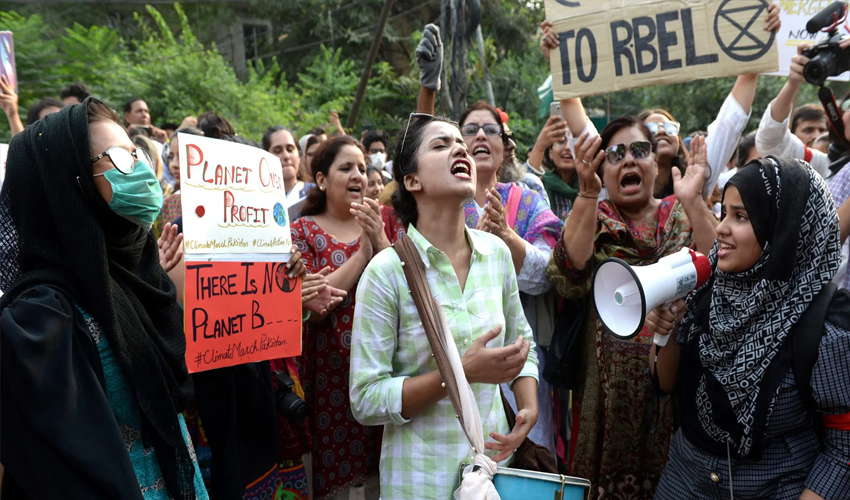In a world grappling with the pressing realities of climate change, the youth of Pakistan stand at the forefront of a vital movement. With approximately 69% of the population under 30, the potential for passionate and vibrant youth to spearhead sustainable solutions is immense. However, the journey toward a greener future hinges not just on enthusiasm but also on comprehensive training and empowerment.
Pakistan is particularly vulnerable to extreme weather events, from devastating floods to scorching heatwaves, underscoring the urgency for effective climate action. Despite the nation’s awareness of these challenges and the development of national and provincial climate policies, actual implementation remains fraught with obstacles. The Ministry of Climate Change, while well-intentioned, has struggled to establish a robust framework for climate action, often bogged down by institutional inefficiencies and a lack of technical expertise in provincial environmental departments.
As our political leaders redirect the energy of our youth toward addressing climate change, it is essential to recognize the role they can play in devising innovative solutions. The challenge lies not only in harnessing their enthusiasm but also in ensuring they receive the training needed to navigate this complex issue effectively.
A positive step forward is the establishment of the Green Youth Movement by the Ministry of Youth Affairs in collaboration with the Ministry of Climate Change. This initiative aims to engage university students in climate action through training and capacity building. However, the effectiveness of these training programs raises concerns. Despite conducting sessions in major cities, the quality and relevance of the content often fall short, largely due to the reliance on non-technical trainers who lack expertise in climate change.
Moreover, the nomination process for trainers has been flawed. Universities frequently nominate faculty members based on seniority rather than their interest or expertise in climate issues. This mismatch has resulted in many faculty members attending training sessions without a genuine commitment to climate action, further diluting the potential impact of the initiative.
Gaps in training and implementation
To truly empower youth for climate action, several reforms are imperative. First, the Green Youth Movement must prioritize the recruitment of qualified climate change professionals as trainers. These experts can provide critical insights and practical guidance, enabling participants to engage meaningfully with the subject matter.
Second, the nomination process should be reformed to ensure that faculty members with genuine interests in climate change are selected as trainers. This approach will create a more relevant and effective training environment, fostering a deeper understanding of climate issues among participants.
Third, training programs must be tailored to address the specific needs and contexts of different regions in Pakistan. Recognizing local climate vulnerabilities and challenges will ensure that youth are equipped with the tools necessary to drive change in their communities.
Role of civil society organisations
In addition to governmental efforts, the involvement of civil society organizations is crucial in fostering climate action among youth. NGOs can play a vital role in providing grassroots support, connecting youth with local communities, and facilitating the implementation of climate projects. Collaborating with a consortium of climate change NGOs can enhance the effectiveness of training programs and support youth-led initiatives.
While numerous youth organizations focused on climate change have emerged, many struggle due to a lack of guidance and technical training. Establishing training facilities in each provincial capital can provide the necessary resources for these organizations to thrive and effectively address climate issues.
Currently, awareness sessions on climate change are conducted sporadically across the country, often lacking coordination and depth. Climate change encompasses a wide range of topics, including climatology, political science, financial management, energy economics, and greenhouse gas accounting. It is essential to develop a comprehensive climate change curriculum that considers Pakistan’s specific context and can be disseminated in local languages. This curriculum should be accessible through print and electronic publications, providing diverse training opportunities for the youth.
Moreover, to ensure effective climate governance, the federal government must fully implement the 18th Amendment, recognizing the role of provincial governments in climate change efforts. Decentralizing training programs to the district level will allow for a more localized and responsive approach, empowering district leaders and communities to tackle unique climate challenges.
Investment in climate education
To achieve these objectives, the federal government should allocate a significant portion of its budget for climate change awareness and education. This funding can be instrumental in expanding outreach efforts, ensuring that both genders are included, and providing targeted training in vulnerable regions such as Sindh and Balochistan.
Additionally, establishing a dedicated climate change awareness and education wing at both federal and provincial levels is crucial. This entity can develop age-appropriate curricula for schools and universities, integrating climate change into existing subjects. By fostering a comprehensive understanding of climate issues among students, the foundation for future climate action will be solidified.
Empowering the youth of Pakistan to take decisive action against climate change requires a multifaceted approach involving collaboration, capacity building, and community engagement. By implementing reforms within the Green Youth Movement, bolstering training initiatives, and fostering partnerships with NGOs, Pakistan can harness the immense potential of its young population.


























